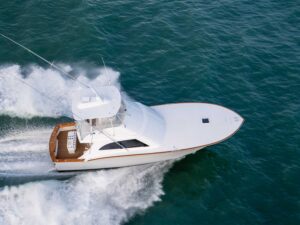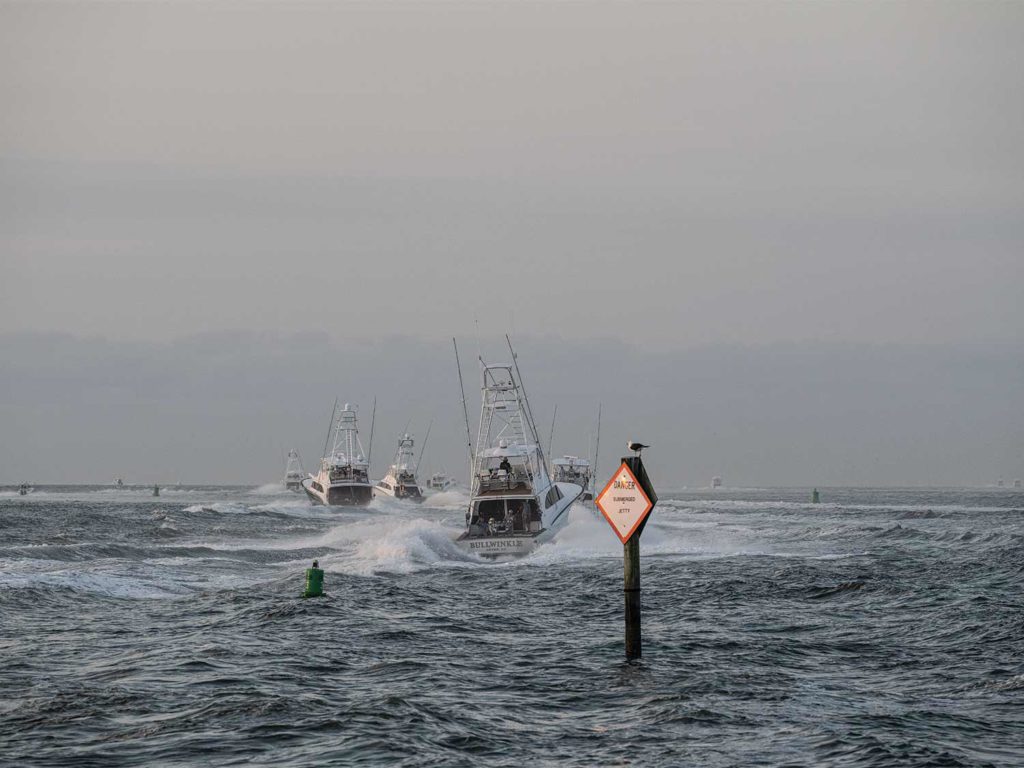
Special delivery: Sign up for the free Marlin email newsletter. Subscribe to Marlin magazine and get a year of highly collectible, keepsake editions – plus access to the digital edition and archives.
There is never a good time for bad things to happen, but if you’ve been on the ocean long enough, stuff is bound to happen. What you do under pressure, how you handle the situation, and what you take from those lessons moving forward will either serve you well, or they could end your career.
Lesson 1: How to Handle Your Boat Sinking
In the early 1990s, my friend and deckhand Capt. Barry Robinson and I were on our way back to Florida from San Salvador in the Bahamas. We were reaching for Highbourne Cay with about 20 miles to go in the deep Exuma Sound. It was nearing the end of our maiden trip on the then new-to-us 1971 45-foot Rybovich, Brier Patch. She was, and is, a special boat in that she was the last boat finished by Tommy Rybovich before his untimely death, and was originally built as Frisky Lady for Capt. Ben DeGutis and owner Jack Willets.
She is special for other reasons as well, including her nearly 1,000-gallon fuel capacity, longitudinal-stringer layout (which was something relatively new to the builder), beamy “wide-body” design, impeccable woodwork inside and out; not to mention her beautiful proportions and timeless lines, among others. She remains in service today as Bandita, plying the marlin-rich waters off San Juan and St. Thomas in the Caribbean.
Having recently passed survey, we were just getting to know the boat during the trip and liked what we had. Over time, we planned to continue the improvements that the previous owner had begun, focusing on the mechanical aspects of the boat because the cosmetics were in good shape.
Our first-day run was slated to be a relatively easy one. With a delayed departure to get everyone on the plane and headed back to the States, we departed with a roughly 140-mile run to Highbourne. There was a slight breeze out of the southwest with a 2- to 3-foot sea and an occasionally larger set, but all in all, good traveling weather. As the late-afternoon sun dropped, we felt her getting heavy and sluggish so I pulled back the throttles and had Robinson hold the wheel as I ran below, hoping to find a stuck float switch.
As I lifted hatches, I found no water in the lazarette and no water in the engine room. Prematurely relieved, yet puzzled, I looked forward down the companionway. My heart sank as some of the floor hatches where beginning to float and I could feel the boat wallowing under the strain of the water in her forward bilges. She wasn’t a very deep-V boat, so there weren’t huge bilges full of water, but when you’re in water well over your head, any water is a lot.
I began pulling bilge hatches apart and found a small intermediate stringer between the chine and the main stringer underneath a bunk on the port side was cracked, and water was coming from underneath at a fairly good clip. Further inspection showed the stringer had come loose from the bottom of the boat and that we could not shed the incoming water fast enough because the boat had been rigged at some point with the forward bilge pumps routed to a sump box for the shower.
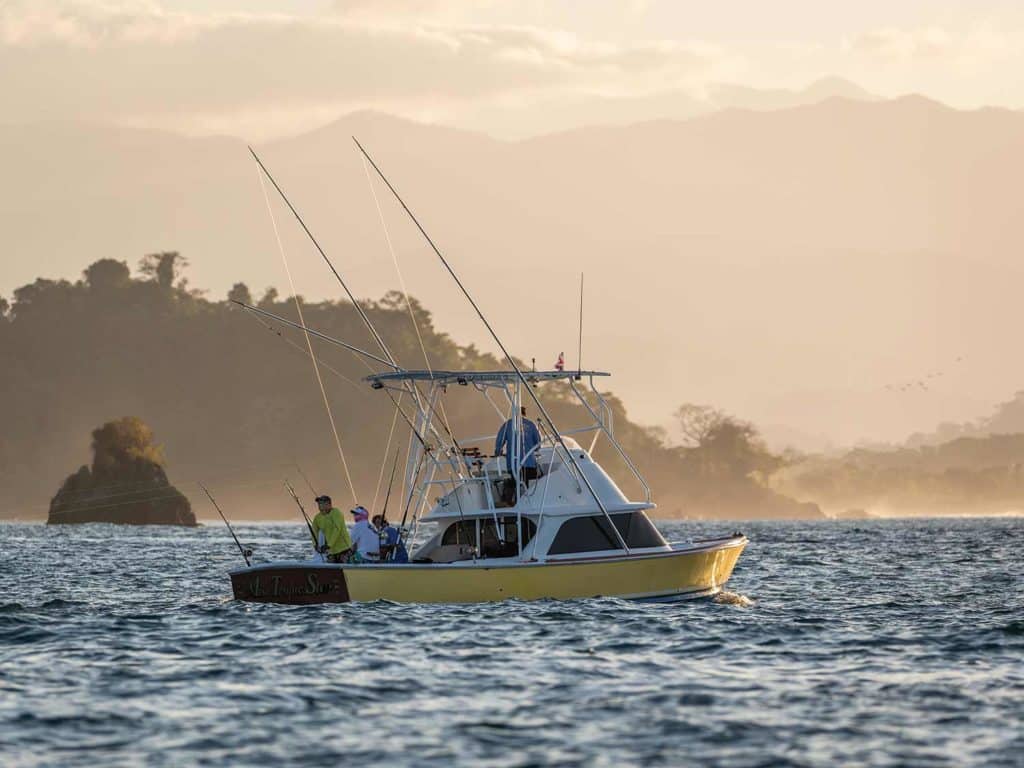
It didn’t’t take long to realize the water overflowing back into the bilge out of the sump was rapidly exacerbating our situation. Doing the math, a 500-gph sump pump cannot possibly shed the water coming from two 1,500-gph pumps. I remember thinking to myself, You dumbass. How could you not have seen all this during the survey?
I started to think about the poor job the surveyor had done to not see the repair work to the stringer and bottom that had been done at some time in her prior life, as well as the misguided plumbing. But there wasn’t time to blame anyone and it wouldn’t do any good anyway. I had to get the water out—I did not want to be getting into a raft that night.
We kept a slow-and-steady course toward Highbourne as I feverishly rerouted hoses and extended them with jury-rigged stuff I had on board so that they went into the sinks, which drained directly overboard. Luckily, for emergencies such as these, I carry a 110-volt submersible pool pump. With the washdown hose connected to it and run out to the cockpit, we were finally shedding water and keeping up with the flow. The slower speed also helped to reduce the flow of incoming water.
We made it across the reef at Highbourne as the last glimmer of light faded, and we tied up in the dark. We were a curious sight to those on the dock with hoses coming out of the salon into the cockpit with water draining from them. I grabbed an underwater light and jumped overboard to look at the bottom and was not surprised to see the long crack and hole from the head of a bolt that had been pushed and pulled as the little stringer flexed with the bottom. I could then also see the previous repair work that was done to this very spot where we had our failure.
There were folks on the dock offering all kinds of remedies and being completely grateful to try any of them, I became the guinea pig. This is when I learned a lot about underwater epoxy-repair products, in the heat of an unfortunate crisis. Hell, I would have stuffed oatmeal in the hole if someone said it would harden and get me home. I tried epoxy sticks first. Wrapped in clear plastic, the Tootsie Roll version with the hardener in the middle of a putty tube disintegrated into a fine dust as I kneaded it together according to the instructions.
The two-part, side-by-side epoxy sticks wouldn’t meld together, so underwater, I had two clumps of useless putty that wouldn’t stick to itself, let alone the bottom of the boat. Then I tried the instant casting stuff for setting broken bones in an emergency. The cheesecloth material quickly shed its epoxy paste and couldn’t even bond its own threads together underwater.
Read Next: Here are some pro tips on creating the ultimate ditch bag.
At this point I was trying anything I could get my hands on. I tried pushing some shaft and rudder post waxed stuffing into the hole hoping to reduce the flow. It fell out. My next move was to cut some wood and patch the bottom, but that, in and of itself, was going to be a mission.
I finally got to two pint cans with the Pettit logo on them—each had a little bit of part A and B epoxy remaining in them. It was thick stuff, but Robinson mixed it with a putty knife on some cardboard and I descended once again to hopefully start filling the hole and length of the crack. Low and behold, the stuff was working. I was able to push it into the hole with my thumb and the heel of my hand—it stuck. Knowing I only had a little, I worked as fast as I could to fill the hole and work out from there as the crack grew smaller farther from the hole. I got back in the boat and the incoming water had abated a great deal.
I called Mark O’Brien, the boat’s owner, and appraised him of the situation. We discussed our next move: get to Nassau and haul out to repair her enough get her home. The next morning, there was just a slight seep coming from under the stringer and the pumps had kept up with the incoming water. I jumped overboard for a look at my handiwork in the early daylight to get a better idea of what we were facing. My swim proved the stuff was sticking; it had hardened and I was not able to pull it away from the bottom.
We departed Highbourne Cay and set a course to cautiously chug to Nassau. I was not too worried on this part of the journey home. We were on the bank and traveling in water which was shallow enough that if she came undone and we went down, we could sit in the tower, have a beer and wait for another passing boat on that busy route to New Providence and Nassau.
We arrived at Nassau Yacht Haven on a beautiful Thursday afternoon and once again I went for a swim to see how the bottom looked. To my relief, the epoxy was in good shape and mostly all there. I quickly set out to get hauled and repaired as Robinson washed the boat. But as things go in the islands, nothing is ever easy.
The next day was a Bahamian national holiday. It was Friday, which meant I was going to be sitting there for three days before anything was going to happen. I walked the short distance along the busy waterfront to the haul-out yard and met with the foreman. When he found out what kind of boat it was, my new friend would not haul me out because he didn’t’t want to crush the chine rails. I assured him that was the least of my worries and I would sign anything releasing him from any liability for that issue. He wouldn’t budge, even with a few crisp hundred-dollar bills as an incentive.
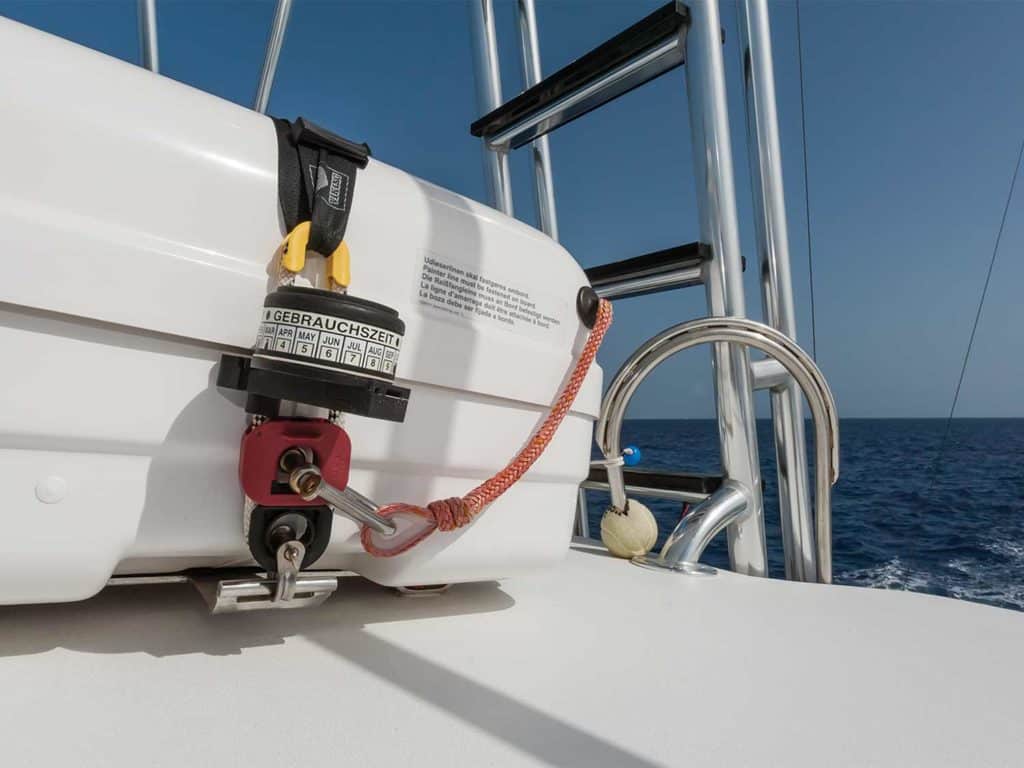
So, as I walked back towards the boat, I went right to the ship’s store. It was time for Plan B. The problem: I really had no Plan B yet. It was formulating in my head as I searched the shelves for ideas and supplies. My other problem was that I had to secure everything quickly as it was late in the afternoon and everything was closing for the long Bahamian weekend.
I hurried along and gathered a bag of ribbed stainless nails, two tubes of 5200 caulking and a caulk gun, and to my great surprise, there were three kits of the miracle Pettit’s epoxy repair—I bought every one. Talking to the clerk, I poked around in the back of the shop and found a quarter-sheet of half-inch plywood and added that to my growing stash. I bought several putty knives, plastic spreaders, mixing pots, rags, acetone and rubber gaskets.
I also purchased a 2-pound mallet that I still carry onboard. If you have ever tried to hammer something underwater, you quickly realize that trying to use your normally effective framing hammer is like trying to pick up a penny when your hand is asleep. You get nowhere fast.
My plan was to get a dive tank and weight belt so I could work under the boat for a time and fill the hole and crack again with my new best friend—Pettit’s underwater epoxy kit—then use the plywood as a wood patch over the top of the entire area. I rented the tank a few minutes before closing at the dive shop. We now had a plan. With the pumps keeping up, light diminishing and being fairly tired, we showered and headed out for a quick bite to eat.
The next morning, we were up early and began our work. Robinson would stay on deck to pass me everything and mix more epoxy as I needed it. We had cut the plywood to better fit the bottom in the fractured area. I got the dive gear on and went over the side. I smeared more epoxy into and around the hole and crack. We then pumped a bead of 5200 onto the outer edges of the plywood to make a border seal and to help it suck up and stick to the bottom while I nailed. Everything was going great until Robinson passed the plywood to me and I tried to get under the boat. As soon as I tried to push it under, it would shoot out to the surface. I needed more weight for my belt to get deeper and have more leverage. I finally got the plywood in place with a fair bit of 5200 all over everything, including me.
I then began hammering the stainless nails about every 5 inches around the border, making three lines of nails from side to side about 10 inches apart so it was tight in the middle as well. This took about an hour and I had emptied the tank. So now I was taking breaths to finish up. Robinson mixed another batch of the epoxy and I used it on the leading edge to create a wedge to help prevent water from flowing between the bottom and the plywood and pulling the patch off.
With the ingress of water now completely stopped, we cleaned up our mess of hoses and departed for Bimini. Again, I figured if I just chugged from Nassau to Northwest Channel light and got on the bank I’d be good to go. We got the bank and had no incoming water so I pushed her up a bit and began making 12 knots. Check the bilge: no water. Push her up to 15 knots: still no water. Good to go. We made Bimini at sunset, tied up and I jumped overboard to check the patch. It was just as I had left it: holding tight and no signs of coming apart or loosening. Allen Merritt happened to be there snapper fishing and heard our story. He said we had it licked and not to worry. He had us over for drinks and dinner on the dock with him and his crew that night. With one more leg to go, but in deep water this time, we were still on edge.
Up early, we departed Bimini at sunup and began the chug across the stream to Hillsboro Inlet and the boatyard at Merritt’s. I had contacted Roy early in this process and kept him abreast of our progress so he was waiting for us with the Travelift that Sunday around mid-day when we pulled in. O’Brien was also there so we hauled Brier Patch out and blocked her— the patch was solid. O’Brien dropped me off in Stuart and the next morning I got the yard at about 9 a.m. and was met by carpenter Vic Albertson. He was not a happy man. He immediately greeted me with a stern, “What the hell did you do?” Flustered, I told him “I got her home without sinking.” He was pissed. He couldn’t get the patch off.
I was happy as hell. Plan B quickly became a strong Plan A if needed in the future and now we could focus on fixing her up and getting her ready for our future use. We did a major number on her at the yard, replacing the small intermediate stringers with new laminated beam stringers which were much beefier and larger that spanned from the forward engine room bulkhead to the forward stateroom bulkhead. We also added a layer of ¾-inch Okume marine plywood outboard of the stinger to the chine and inboard from the stringer to the inner stringer, then glassed it all and finished it off with a nice paint job.
We removed the 903 Cummins engines and had them completely rebuilt and updated, then set up on the dyno, taking them from about 425 to 600 hp. Brier Patch was now a 30-knot top-end boat with a good cruise at 25 knots. And she served us well for many years afterward.
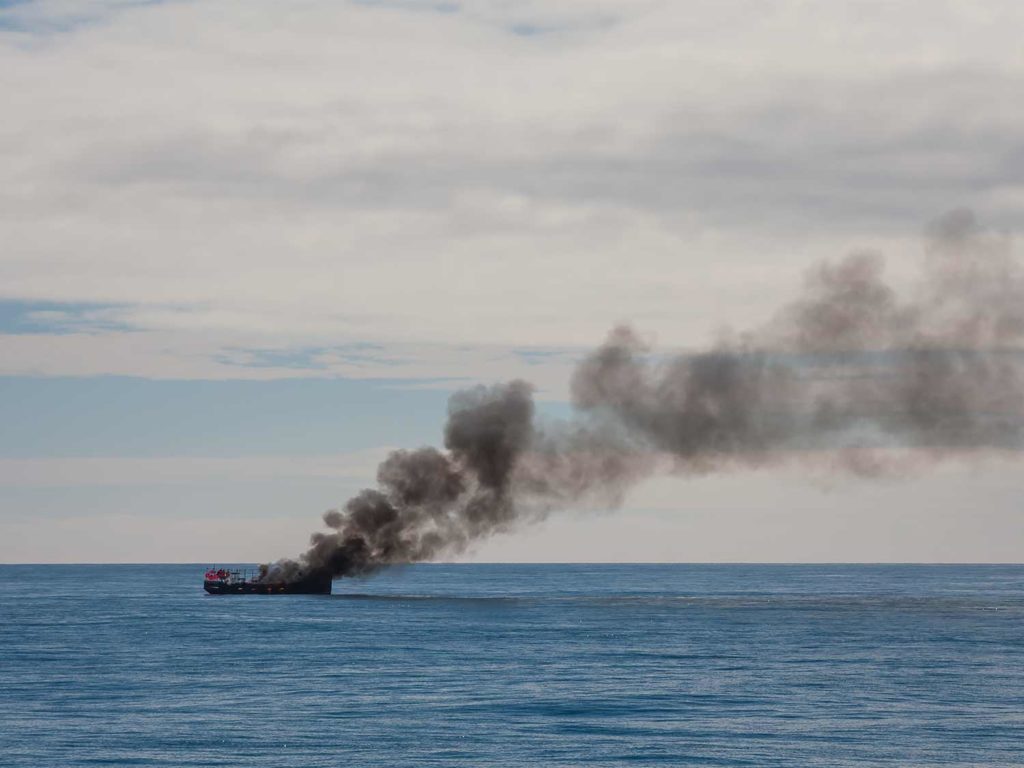
Lesson No. 2: How to Handle a Boat Fire
As if taking on water isn’t bad enough, the smell of smoke anywhere—let alone offshore— brings a shiver of fear to anyone with a pulse. Like anything else, prevention is the best policy. Keeping your safety gear current and having the tools available onboard to be able to effectively deal with a highly dangerous situation goes a long way in lessening or alleviating the potential for the scary prospect of fire.
In the early 1990s I had a project-manager assignment representing the owner building custom composite 90-foot sport-fishing catamaran in New Zealand. It was very detailed project and had many challenges as we integrated fishing features into a large catamaran with a 26-foot beam. Certainly electrical, plumbing and most mechanical systems had to be tailored to US standards which required a good deal of logistics and planning. The catamaran was powered with twin 24-71TI DDEC Detroit Diesels, which were two 12-7s bolted together, with four turbos. It was an experimental big-horsepower package at the time.
The Kiwi boatbuilders were incredibly talented and absolutely up to the task of building a fine boat. After a three-year build, we shipped the boat to the port of Jacksonville from Auckland. To help me get the boat off the ship and delivered to South Florida, I had enlisted the help of my longtime friend Capt. Gary Stuve, an experienced and overly capable man for the job. During our build, he was also building an 86-foot sportfisherman in Australia and we often compared notes and researched similar solutions to issues faced when building a boat overseas back then.
The day finally came when the boat arrived in the port at Blount Island, we met up with the builder representative, Mel Jones and a mate of his who had both flown in from New Zealand. We had shipped the vessel as deck freight, so it was quite a sight to watch the cranes lift her off the ship. We all scrambled down a rope ladder and passed our bags aboard. Bringing the boat online took some time as it was totally shut down for the trip across. Naturally, the folks on the ship were in a hurry to get us away from her side. We started the engines with a bit of a struggle, but got them up and idling to the point where we thought we were good to go. Casting off, we slipped away from the ship and headed into the St. Johns River. Everything was fine until we lost an engine a short while later. Steering a catamaran on one engine presents a myriad of problems. At slow speed, it will not go straight, and surely won’t allow steerage in a winding river.
We hit the start button in an attempt to restart the engine and the starter locked up. Within a minute, you could smell electrical heat, and then smoke starting pouring out of the mezzanine engine-room entrance on that side. Stuve was trying to keep us in the channel while I ran down and opened the hatch to get a look. I took a breath and entered quickly, seeing the smoke was coming from the inboard side of the engine under the exhaust manifold—the starter was glowing red and the smoke was thick and billowing out of the hatch. I ran out of breath and got up on deck knowing that I had to shut the electrical power off to the engine to stop the starter.
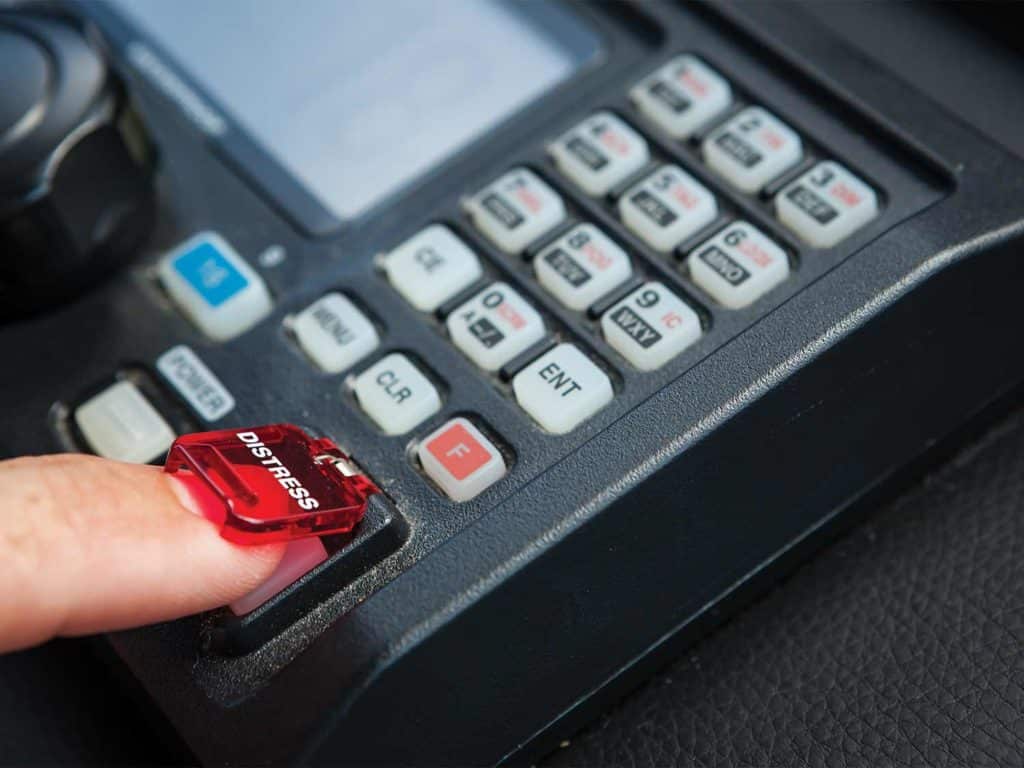
This is when I realized the boat had a serious design flaw. The main battery switches were on the forward bulkhead of the engine room. I had to enter the engine room and somehow get past the glowing starter, reach the battery switch and get back out of the engine room. I needed a really big breath. It took me two tries but I finally got there, running past the smoldering starter that was squealing a high-pitched scream; wire insulation had started to flame up, smoke was pouring off, and it was hot! I killed the battery switch and got out. Sucking in another breath, I grabbed a chemical fire extinguisher and discharged it on the starter and the surrounding area.
Having defused the fire, we now had to get to a dock with one engine and very limited maneuverability. With Stuve at the wheel, we eased out of the river and into Mayport Marine, where we pulled alongside the dock and got the boat tied up.
Assessing the situation, we had several immediate needs. First, we had to find a new starter and locate a mechanic to check everything out, because we were unsure of how much damage had been done to the engine. Then we needed to clean up the thick, yellow caustic powder from the chemical fire extinguisher that had already begun to eat the bare metal surfaces of the hoses, fasteners and brackets throughout the engine room. It was a flat-out mess. We ended up getting the engine room cleaned up; a mechanic replaced the starter and cables and we were on our way home to South Florida in two days.
In the mid-1980s, we were on the edge between Bimini and Cat Cay looking for bluefin tuna. It was a clear day with light winds, so we had the conditions we needed to see some tuna as they came through. Around mid-morning, we saw thick smoke billowing from a tug boat that was working the Sandy Cay project. By the time we got close enough to see what was going on, it was totally engulfed. The crew had gotten off, but there was nothing we could do. She burned for a long time. It was spooky as hell.
Another time in the 1980s in Walker’s Cay, a boat was coming in from the southeast over the flats but didn’t quite make it when fire broke out. It started with a bit of smoke but escalated quickly. A couple small boats full of locals took off to help. It burned for quite a while and the thick smoke left a trail in the sky miles long. When the small boats returned, they had the husband and wife, who were quite glad to be safe to say the least. As we listened to their story, shaken as they were, we determined they had a turbo fire. But what really struck with me was how the wife described the breeze fanning and pushing the flames, shooting and darting about the boat. She said she stayed upwind in the cockpit and could feel the intense heat while her husband discharged two extinguishers to no avail.
She described the smoke pouring out of the salon door and wrapping around the boat’s sides, billowing away in the wind. Then she said when the flames were fanned by the wind up to the curtains on the bridge, all hell broke loose as the curtains basically exploded, sending shards of flaming plastic all around. Luckily, that’s when the skiffs got there. The locals pulled them off the boat and they watched as their retirement burn to the waterline. They lost everything, but they were alive. I never heard anything more of the story but I sure as hell remember the emotion and the story unfolding as she told it. I wrote the story in my logbook to remind me how quickly things can change.
I also wanted to be better prepared for an onboard fire. First, I now have fire hoods for breathing and mini-flashlights for every guest at their bunk and two for the engine room entrance so you can breathe and navigate your way out of the boat in thick smoke and in the dark. Second, I religiously adhere to annual fire-equipment service on every boat. Finally, I have more fire extinguishers than are required and I recommend our crewmen take a fire-fighting course at least once in their career. With so many flammable items on a boat, there are different canisters for certain situations, and knowing which canister to use can help you not make the fire worse by using the wrong one.
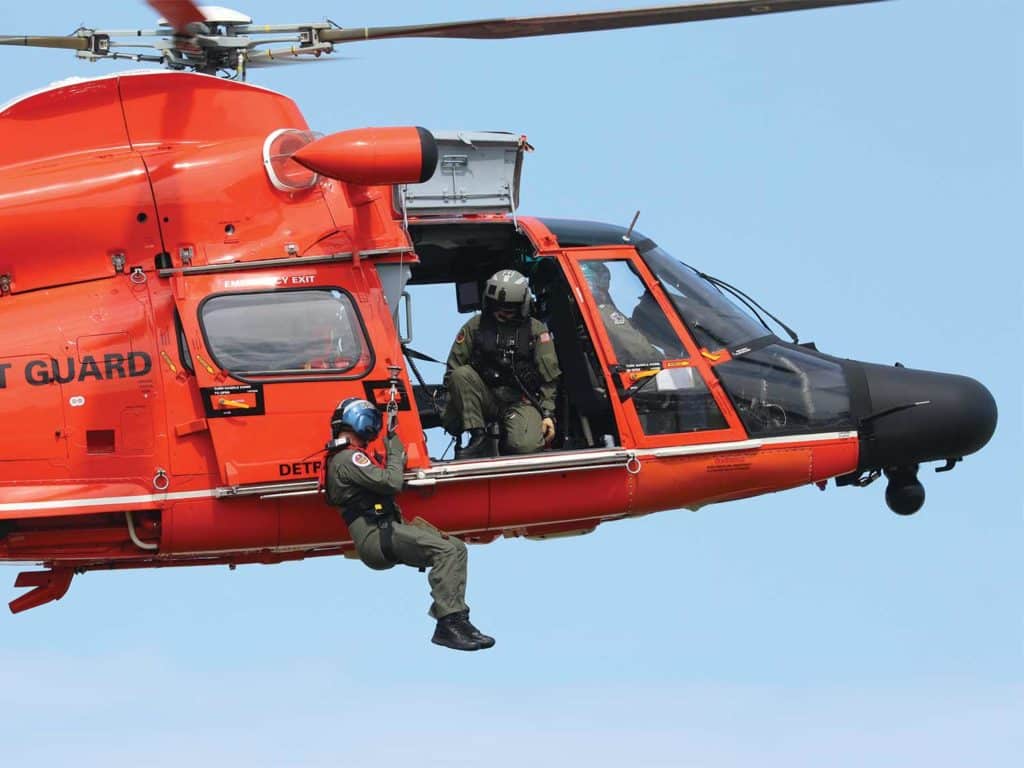
Lesson No. 3: How to Handle Medical Emergencies
Not all of us can deal with the sometimes-gruesome scene of an injury. Shredded, cut or punctured skin, blood, broken bones, anaphylaxis, a person in shock or unconscious are all potential scenarios on any given day, anywhere—especially on a boat. We can’t always have a medical professional onboard, so having a plan and a bit of training is at least a step in the right direction to get someone first aid and help them out of a jam, or get them to the nearest help that can really make a difference.
It’s not a fun subject to talk about—medical emergencies can be scary. Issues have happened in our travels, either on one of my boats as a deckhand or captain, or another boat where we assisted in the treatment. There have been lacerations, broken bones, burns, illnesses (not just seasickness), punctures, slips, trips and falls, severe bruises, dehydration, unconsciousness, electrical shocks of varying severity, as well as a host of other situations while at sea.
I’ve listened twice to the VHF when other boats were looking for help or talking to the Coast Guard with an angler having a heart attack, only to learn the final result was fatal. That is a long ride home from the canyon. In both instances, the angler had caught a tuna in the heat of the day and it was just too much for their physical conditioning. Sudden cardiac arrest can happen at any time to anyone; the current survival rate for SCA in the United States is less than 5 percent. The potential for successful resuscitation decreases by about 10 percent with every minute that passes from the onset of the SCA.
I feel that a defibrillator should be carried on every boat over 23 feet, and required when over 35 feet. We carry a compact—and basically foolproof—unit made by Phillips Electronics called the HeartStart FRx defibrillator. It is mounted in a waterproof Pelican case and is supplied with a 4-year lithium battery that keeps the unit ready to go at all times. The unit performs a series of daily self-checks, as well as a complete system check every 30 days.
Carrying an oxygen kit for breathing situations that you might encounter offers a good chance of helping someone until real medical attention can arrive on scene. We carry oxygen aboard because it can be a critical aid in saving a life. Our kit contains a Jumbo D tank, a medium oxygen mask, manual resuscitator bag, CPR mask, non-breathing oxygen mask, a pediatric oxygen mask and a 25-liter-per-minute regulator. The tank requires a visual inspection annually and a complete hydro inspection every five years, just like a dive tank.
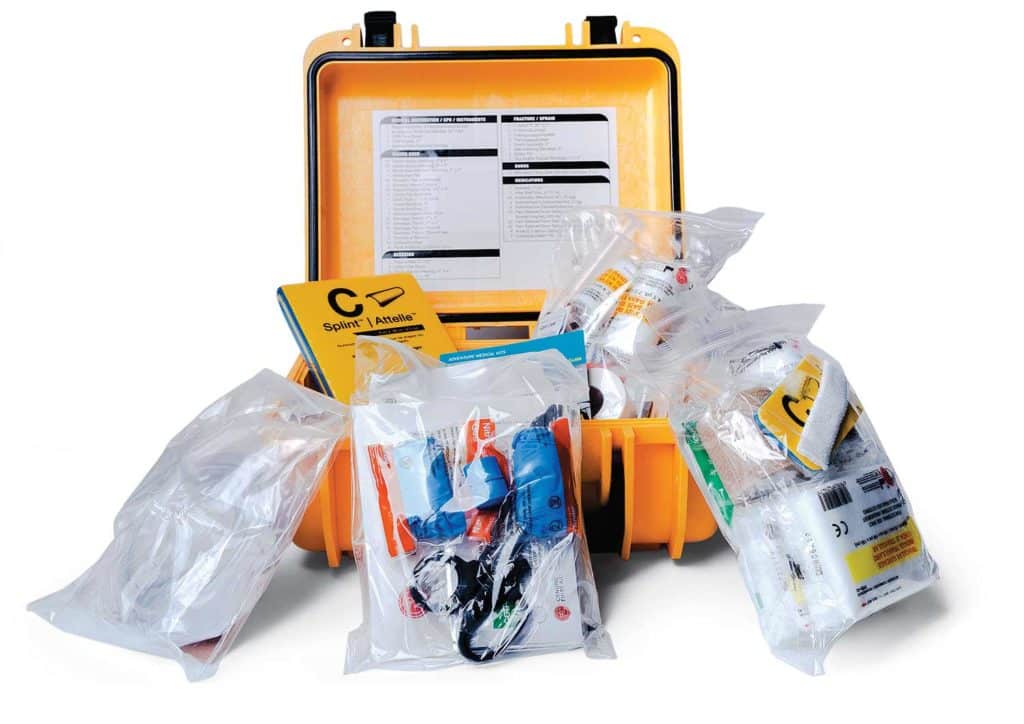
Other injuries require a well-stocked medical kit. Crazy things happen when fishing. Capt. Wade Richardson ran The Hooker in Panama for several years. While live-baiting tunas, the action was hot and heavy; Richardson was live-lining a bait when he had an aggressive bite, and by bad chance got a loop of line caught around his finger. The fish kept going and the line cut the tip of his finger off where it just hung by a tiny piece of skin. As luck would have it, he had Dr. Matt Holcomb along fishing with him. With a well-stocked first-aid kit, Holcomb was able to suture the tip of his finger back on without having to go to the hospital.
Having lost the last inch of my left pinky finger when a cockpit hatch fell and crushed it, I can tell you the pain was pretty incredible. A proper medical kit will contain more gear than you ever hope to use, but when you need it you’re damn glad it’s there. A properly stocked medical kit is essential gear onboard. A basic first aid kit will help, but it’s not enough.
There are some great pre-assembled kits available. To be sure you get what you need, there are some basic things to consider. Most kits are assembled with respect to the size of the vessel, number of crew on board, hours away until you can get help, and of course, your itinerary. These kits are designed to give you a first-responder shot at helping an injured person; however, all the bandages and sutures in the kit are not worth the space they take up if you don’t know how to use them.
With as much traveling as boats do today, having at least one crewman trained and refreshed annually in first aid is a good step in keeping an injury from becoming a larger issue. It’s also a good idea to have some additional items such as EpiPens. They are used to stop anaphylaxis shock from allergic reactions. Carry at least one adult and one junior EpiPen. Nitroglycerin pills are a smart item to carry for someone that may be having cardiac arrest. Ketorolac is a nonsteroidal anti-inflammatory drug to treat moderately severe pain due to fractures or trauma, for example; it is an uncontrolled substance, so you will not have any issues with the Coast Guard if you get stopped.
A couple of summers ago I was in the Bahamas and had a young mate that worked all day out in the sun cleaning on a day off from fishing. That evening after dinner, he started to shake uncontrollably, eventually ending up on the salon floor. After evaluating him, I started to give him water, bottle after bottle of it. He was getting it down and by the time the EMTs arrived, he was returning to normal. They evaluated him and after some time and more water they gave him the all clear and agreed that he was dehydrated. The EMTs had to come by boat, so it took them a while to arrive. It was a simple fix, but my training paid off—I was able to get ahead of it and help him recover.
A quick search on the web for medical training in your area will point you in the right direction to be able to help someone in an injury situation, or perhaps even save their life. Companies like D-Dey Response Group offer certified life-safety training courses; they also have medical kits with the tools you’ll need to have on board to aid in a health emergency.
No one ever wants to think it will happen to them, but at some point, if you spend enough time on the water it’s going to happen. The odds are just too great. Being prudent and prepared is your best course of action.
